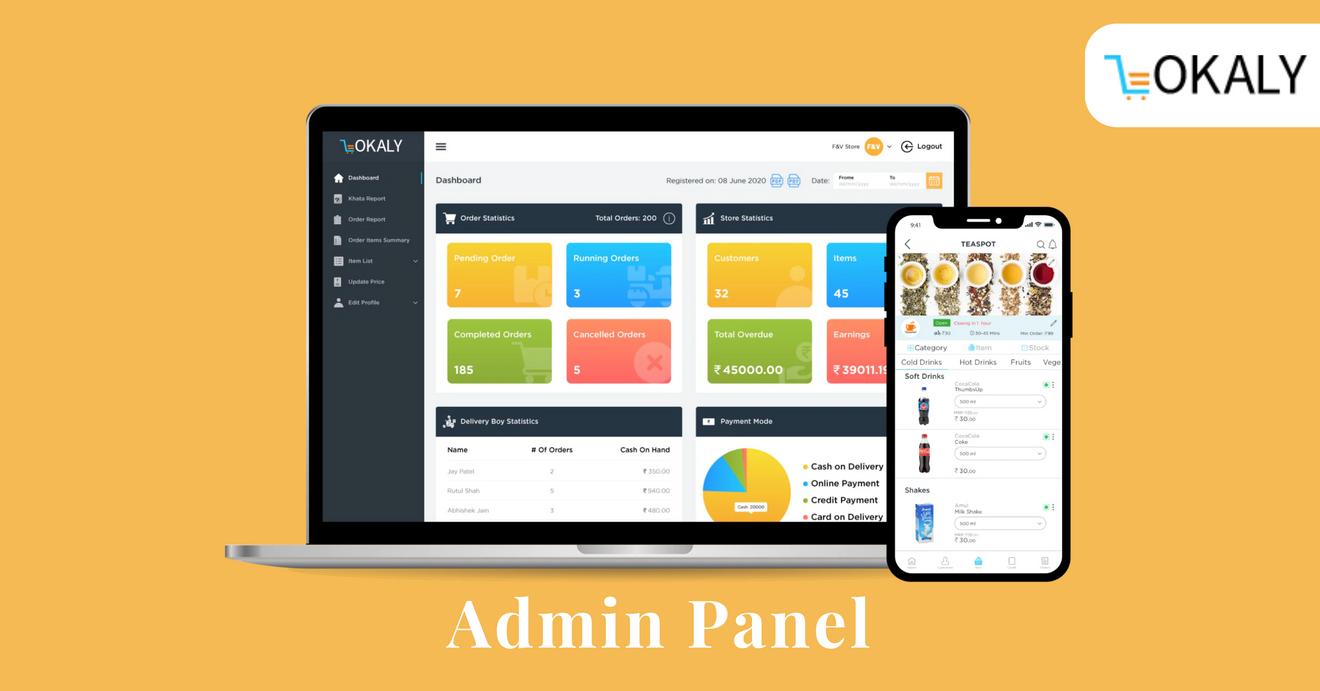
3 minute read
On-Demand Food App Development - Admin Panel
On-demand food app development for the admin panel involves creating a web-based interface that allows administrators to manage and oversee various aspects of the food delivery platform Here are the key features and functionalities that should be included in the admin panel:
1. Dashboard and Analytics: Provide an overview dashboard displaying key performance metrics, such as the number of orders, active users, revenue, and delivery status. Include analytics and reporting tools to gather insights on user behavior, popular restaurants, and sales trends.
Advertisement
2. Restaurant and Menu Management: Allow admins to add, edit, and remove partner restaurants from the platform. Enable the management of restaurant details, menu items, pricing, and availability.
3. Driver Management: Provide tools to onboard and manage delivery drivers, including driver registration, approval, and verification. Allow admins to view driver details, track performance, and manage driver accounts.
4. User Management: Allow admins to manage user accounts, including registration, verification, and account suspension if necessary. Provide access to user details, order history, and customer support interactions.
5. Order Management and Tracking: Display a list of all incoming and completed orders, along with their status and details. Enable order tracking and the ability to update the order status manually if required.
6. Promotions and Discounts Management: Offer tools to create and manage promotional offers, discounts, and loyalty programs. Allow admins to set rules for discounts and specify validity periods.
7. Payment and Commission Management: Provide an overview of all transactions, including payments made by customers and commissions earned by the platform. Enable the processing of payouts to restaurants and delivery drivers.
8. Customer Support Management: Allow admins to handle customer support queries, view chat interactions, and provide timely responses to customers.
9. Content Management System (CMS): Offer a CMS to manage app content, including static pages, FAQs, and app-related content.
10. Real-Time Monitoring and Alerts: Implement real-time monitoring to identify and address any issues with the app, orders, or deliveries. Send alerts or notifications to admins for critical events or abnormalities.
11. Multi-Language Support: Consider adding support for multiple languages to cater to diverse administrative teams.
12. Role-Based Access Control: Implement role-based access control to grant different levels of access to admins based on their responsibilities.
Developing a robust and user-friendly admin panel is crucial for efficient management and smooth operations of the on-demand food delivery platform. By incorporating the above features, you can create an admin panel that empowers administrators to oversee and optimize all aspects of the food delivery app.
On-Demand Food App Development - Features
On-demand food app development involves creating a comprehensive mobile application that connects users with restaurants and facilitates food delivery services. Here are the key features that should be included in an on-demand food app:
1. User Registration and Login: Allow users to create accounts and log in using their email, phone number, or social media accounts.
2. Restaurant Listings: Display a list of partner restaurants with relevant details such as name, cuisine type, ratings, and location.
3. Menu Display:Present restaurant menus with categories, item descriptions, and prices for easy browsing.
4. Search and Filters: Enable users to search for specific dishes or cuisines and apply filters like price range, dietary preferences, and restaurant ratings.
5. Customizable Orders: Allow users to customize their orders, such as choosing toppings or specifying dietary requirements.
6. Cart and Checkout: Enable users to add items to their cart and proceed to checkout for a seamless ordering process.
7. Secure Payment Gateway: Integrate a secure payment gateway to facilitate online transactions within the app.
8. Real-Time Order Tracking: Provide users with real-time updates on their order status, from preparation to delivery.
9. Order History and Reordering: Display the user's order history for easy reordering of favorite dishes.
10. Ratings and Reviews: Allow users to rate and leave reviews for restaurants and dishes based on their dining experiences.
11. Push Notifications: Send push notifications to users for order confirmations, delivery updates, and promotional offers.
12. Customer Support: Offer customer support features, such as an in-app chat or helpline, to address queries and concerns.
13. Delivery Driver Integration: Integrate a separate app or dashboard for delivery drivers to manage and fulfill orders.
14. Admin Panel: Develop an admin panel to manage restaurant listings, menus, orders, users, and other app content.
15. Multi-Language Support: Consider adding support for multiple languages to cater to a diverse user base.
16. Social Sharing and Referrals: Allow users to share their dining experiences and referral codes with friends and family.
17. Discounts and Promotions: Implement promotional deals, discounts, and loyalty programs to attract and retain customers.
18. Offline Access: Offer limited offline access to certain app features to accommodate users with poor or no internet connectivity.
19. Multi-Platform Compatibility: Develop the app for both iOS and Android platforms to reach a wider audience.
20. Contactless Options: Provide contactless ordering and payment features for added safety during health concerns.
By incorporating these features, an on-demand food app can provide a seamless and userfriendly experience, enhancing customer satisfaction and boosting the success of the platform.




